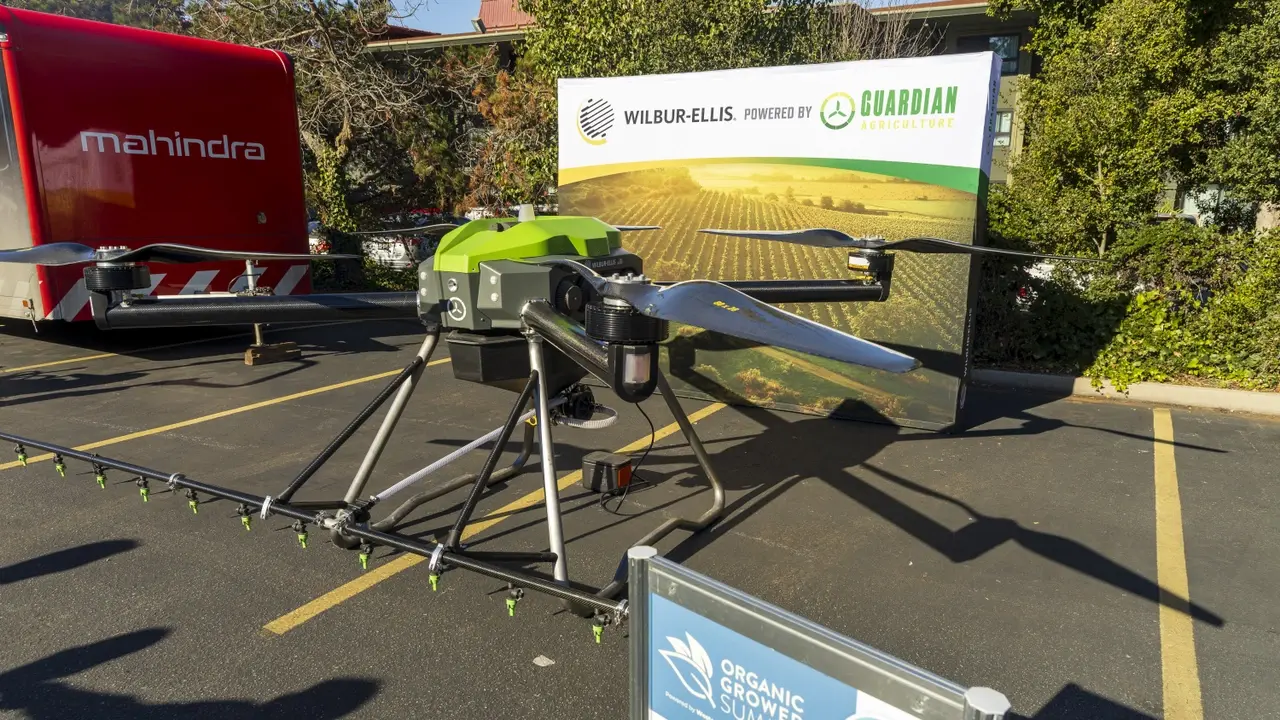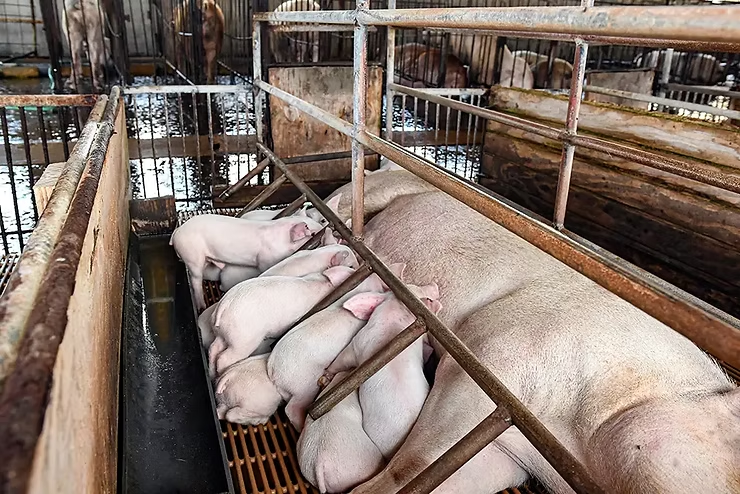The U.S. Wheat Associates (USWA) is celebrating the arrival of 68,350 metric tons of wheat from the...
New Drone a ‘Look to the Future’

Some California growers have a new option for applying crop protection products this year, and one with a big upside. Wilbur-Ellis will be contracting with growers in the Salinas Valley, Yuma and Coachella beginning this year to apply products with a drone the size of an SUV.
With four 80-inch propellers, a 20-gallon tank and an 18-foot spray boom, the SC1 Guardian Agriculture fully electric drone is unique in its field, according to Matt Beckwith, Vice President of Business Development and Regulatory Affairs for Guardian Agriculture. And because of a partnership arrangement, Wilbur-Ellis has sole access to the drone for the immediate future.
The partnership between Guardian Agriculture and Wilbur-Ellis sprang out of an agreement between the two companies to co-develop the drone in an attempt to combine the agricultural expertise of Wilbur-Ellis with the engineering expertise at Guardian Ag.
The introduction of the SC1 has been several years in the making, Beckwith added, noting that Guardian Ag has been working on perfecting the drone since 2017.
“It turns out that making drones and making them work well is a really hard thing to do,” Beckwith said. “And that is why so few companies have done it successfully.”
He said that the SC1 is “the fourth or fifth different version” of the current model. “It has taken us longer to develop this,” Beckwith said, “because we haven’t just pushed the easy button. And there is no one making drones for commercial purposes at this scale.”
Guardian Agriculture has been testing the current version of the SC1 in Salinas for the past year, said John Watson, UAS Solutions Manager for Wilbur-Ellis. According to Watson, the team at Wilbur-Ellis has been impressed with what it has seen.
“They’ve been dialing in a lot of their systems, the spray patterns and that kind of thing, and are in the final phases of tweaking the production models so that we can put them into commercial use this season,” Watson said.
The drone was displayed at the Organic Grower Summit in Monterey in December, presented by Farm Progress and Western Growers.
Better coverage
The SC1 has several attractive features for growers and applicators, according to Elliot Dorenbaum, Operations Manager for Wilbur-Ellis, including the ability to carry more weight than a typical drone.
“We can put a 30-gallon per minute pump on it, which means that we can apply at those 10- and 20-gallon rates that a lot of vegetable growers need to get good coverage,” Dorenbaum said.
“And the boom allows us to be closer to the canopy and get more even coverage with less risk of drift,” Beckwith said. He noted the drone typically will fly five to six feet off the ground during an application.
“The drone can output faster than a typical drone,” Watson said, noting it can cover up to 40 acres an hour at a 5-gallon-per-acre rate. “At more typical rates of 10 to 15 gallons an acre it can still cover between 13 to 20 acres per hour. And the SC1 batteries have a longer life span than those of other drones,” he said. “This flies faster than other drones, it outputs faster, carries a bigger load and it operates longer.”
Also, because of its size and because it is equipped with a boom rather than atomizer-based spray nozzles, the SC1 can apply product in weather conditions that other drones can’t, according to Dorenbaum. “It is more capable of spraying in high-wind environments than the atomizer-based spray deposition systems.”
When comparing drones to helicopters, drones offer several advantages, Dorenbaum said, including that a drone can spray at night, whereas a helicopter needs daylight to operate. “That on its own is a huge bonus for safety, because there are less people out when the sprays are happening,” he said.
Also, Dorenbaum said, whereas a helicopter often needs to pull up on the edge of fields to give clearance to objects, a drone can provide more complete coverage. “We can go right up to the edge,” he said. “We have centimeter-level precision based on current technology around RTK (real-time kinematic) and the ability of the drone to understand where it is relative to its environment.”
As for a drone’s advantages over ground rigs, again there are several, Dorenbaum said, including the ability to spray when fields are wet. Also, a grower needn’t relocate irrigation pipe or other in-field equipment when spraying a field with a drone, something a grower needs to do when running a ground rig through a field.
Watson said Wilbur-Ellis will use the SC1 drone to spray “anything that is legal to spray from the air.” He added that company is very particular about which jobs it takes with herbicides, but on occasion it will spray herbicides with the drone, something the company has completely ruled out with helicopters.
Made in the USA
One other attractive feature of the drone, according to Watson, is it is built in America from almost exclusively U.S. parts. And because less than 1 percent of the parts are from China, there should be no manufacturing disruptions if trade is disrupted, Watson said.
Under its partnership arrangement, Wilbur-Ellis has exclusive rights to the first several drones that Guardian Agriculture produces (the companies are negotiating the exact number). Wilbur-Ellis plans to make the drone available to its customers in Salinas, Yuma and Coachella this year, according to Watson, and then expand to other areas in California, as well as into Oregon and Washington.
“The rubber is hitting the road with these drones,” Dorenbaum added. “Drones have existed for a long time, and they have been hyped in ag for a long time, but we are getting to the point now where they’re mature enough that growers who are fixated on the bottom line are really interested.”
EDITOR’S TAKE:
This type of technological advancement is what keeps American agriculture at the top of the list when it comes to productivity and efficiency. We don’t often focus on the needs of specialty crop producers, but this is a perfect example of what they are doing to save time and money while providing safer application of crop protection materials. And, although this particular cooperative venture between Wilber Ellis and Guardian Agriculture is limited in scope, you can bet, that if successful, it will spread to other areas of the country rather quickly.
What do you offer that is new and exciting? Do you have a mobile service unit? Are you using AI in the shop or parts departments? What about the technology incorporated in the vehicles you sell? Use your social media and advertising outlets to let famers/ranchers know how you are working to make their lives easier and more profitable.








